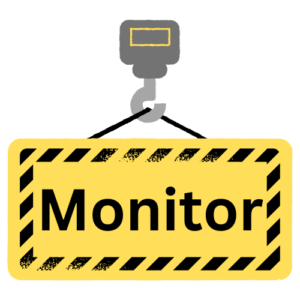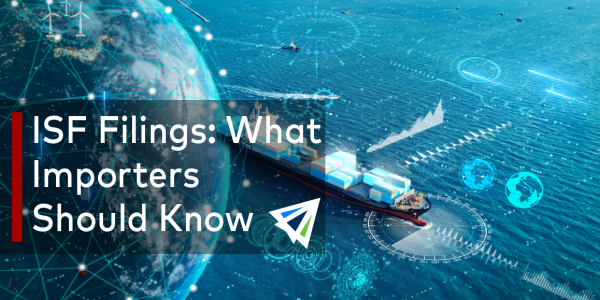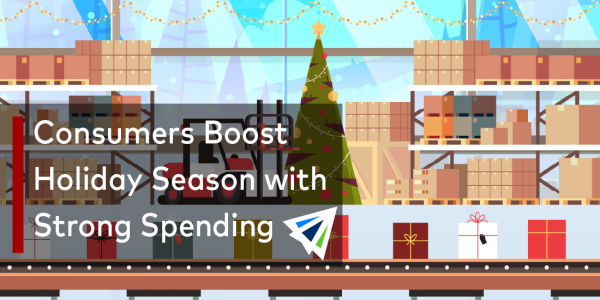Competitive Edge
February 12th, 2025
Stay Current with InterlogUSA
Market Update

— Tariffs: On February 10th, China implemented a 15% retaliatory tariff impacting U.S. coal and liquefied gas imports, along with a 10% tariff on crude oil, agricultural machinery and large-engine cars, per AP News. This comes after the U.S. enacted 10% additional tariffs on Chinese imports as of February 4th.
Over the weekend, President Trump announced his intent to impose more tariffs, this time a 25% tariff on ALL steel and aluminum imports. The in effect date for these is scheduled for March. However, this remains a fluid situation, and things may change.

— De Minimis: Last Wednesday the White House revised its recent executive order, which removed the duty exemption for de minimis shipments valued at $800 or less. This comes after the Trump administration eliminated the exemption for de minimis (on Tuesday Feb. 4th) per Freightwaves, which led the USPS to suspend all inbound package deliveries from China – though they reversed this decision the following day.
— CMA CGM has begun to roll out peak season surcharges on Northern Europe to U.S., Canada and Mexico trade lanes, effective March 1st – per a CMA CGM advisory. The surcharge rates look like they will be on the steeper side – if they stick. Please reach out to us at: support@interlogusa.com if you have any questions.
— Out in Europe some ports (Antwerp, Rotterdam, etc) have experienced congestion issues, which has led to a crunch in capacity.

— The FMC has finalized their review of the new ocean carrier partnership, Premier Alliance (formerly known as THE Alliance), and was officially in effect as of February 9th.
— On February 25th, ILA union members will vote on the new tentative contract that was reached back in early January. The tentative contract includes a 62% pay raise over six years, among other details.
Freight News
U.S. Retailers Stay Confident in Strong Cargo Volumes Despite Tariff Concerns
Even amidst the news of tariffs (and potentially more tariffs being introduced/in effect), U.S. retailers expressed confidence in continued strong cargo volumes at U.S. ports in the coming months.
According to the latest Global Port Tracker report, issued every month by Hackett Associates and the National Retail Federation, they anticipate a small 0.2% year-over-year increase in February imports. This would be an improvement from the 4.5% decline projected in the January GPT.
Similarly, the February GPT now predicts an 11.1% rise in U.S. imports for March, a slight increase from the previous 10.6% forecast. For April, year-over-year import growth is now expected to be 8.2%, a slight upward revision from the 8% anticipated in January.
However, the May import forecast has been adjusted downward slightly, now predicting a 5.4% year-over-year increase, compared to the earlier estimate of 5.9%.
This data suggests that retailers will keep building their inventory in preparation for spring sales as the summer season draws near. But should be of note that things can change and adjustments may be made to these predictions as we continue along the way.
Did You Know? With Johnny Cargo!
Answer: C – California
Although the United States isn’t the top producer of roses globally, it plays a key role in the international flower market, particularly around Valentine’s Day when the demand for roses peaks. California leads the country in domestic rose production.
Due to California’s ideal climate and soil conditions, it makes for a perfect region for growing roses. Additionally, California has lots of greenhouses and high-tech growing facilities, which allows them to produce roses year-around.
InterlogUSA’s chat bot Johnny Cargo sure is an inquisitive soul. However, he doesn’t just ask about industry-related trivia. Johnny also loves to ask supply chain professionals about their shipping arrangements and which areas can benefit from InterlogUSA’s assistance as an end-to-end freight forwarder.
He works around the clock and is always available for conversation.

4 Tips for Streamlining Hazardous Materials Shipments
1. Plan Well In-Advance. 2. Proper Labeling. 3. Separate hazardous and non-hazardous materials. 4. Work with an experienced freight forwarder.
We encourage everyone who deals with hazardous material shipping to be cautious and detailed in all shipping documents. Overlooking details that may seem unimportant to you can cause for hefty fines or transportation disasters.
Sign up for our
industry answers
Our team works to provide valuable, unique, and relevant content to assist you in finding solutions. Sign up now.

